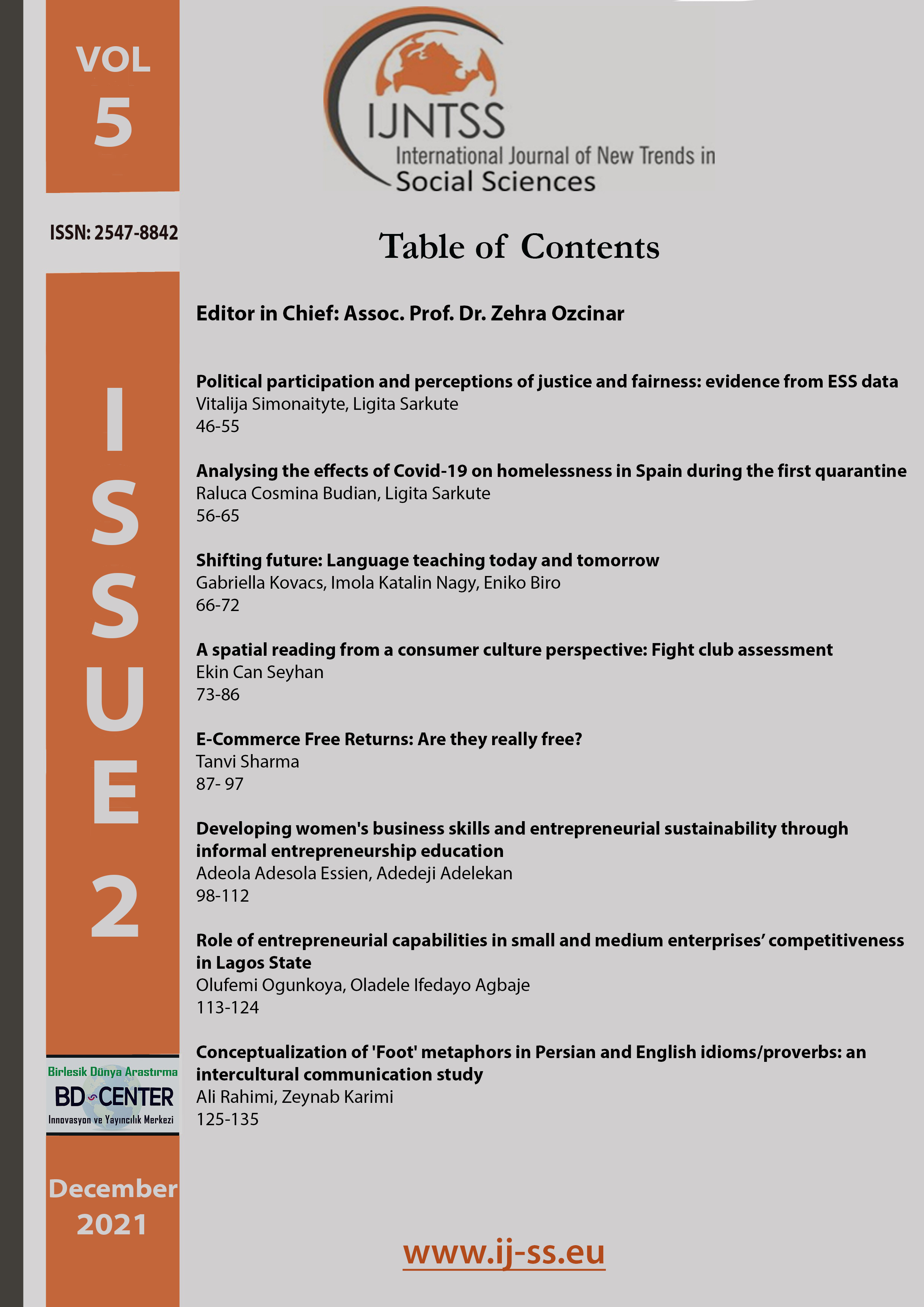A spatial reading from a consumer culture perspective: Fight club assessment
Main Article Content
Abstract
In design readings, the relationship between place and the user of place is quite strong. In the Fight Club story, the main character Narrator, and the places are presented with a critical point of view and based on consumer culture. Although there are differences between the film and the book, both are based on the same text and fiction. This study aims to make a reading of the relations of the Narrative character with places and the relations. In this sense, two separate productions will be considered as a whole and the book and the film will be used as a common reading tool in this study. In the whole of the study, both common and different places in the book and the film will be discussed together. In this sense, in two different art branches; through literature and cinema; an integrated analysis will be conducted.
Keywords: Chuck Palahniuk; Consumer Culture; Fight Club; Modernism; Place.
Downloads
Article Details

This work is licensed under a Creative Commons Attribution 4.0 International License.
Authors who publish with this journal agree to the following terms:
- Authors retain copyright and grant the journal right of first publication with the work simultaneously licensed under a Creative Commons Attribution License that allows others to share the work with an acknowledgement of the work's authorship and initial publication in this journal.
- Authors are able to enter into separate, additional contractual arrangements for the non-exclusive distribution of the journal's published version of the work (e.g., post it to an institutional repository or publish it in a book), with an acknowledgement of its initial publication in this journal.
- Authors are permitted and encouraged to post their work online (e.g., in institutional repositories or on their website) prior to and during the submission process, as it can lead to productive exchanges, as well as earlier and greater citation of published work (See The Effect of Open Access).
